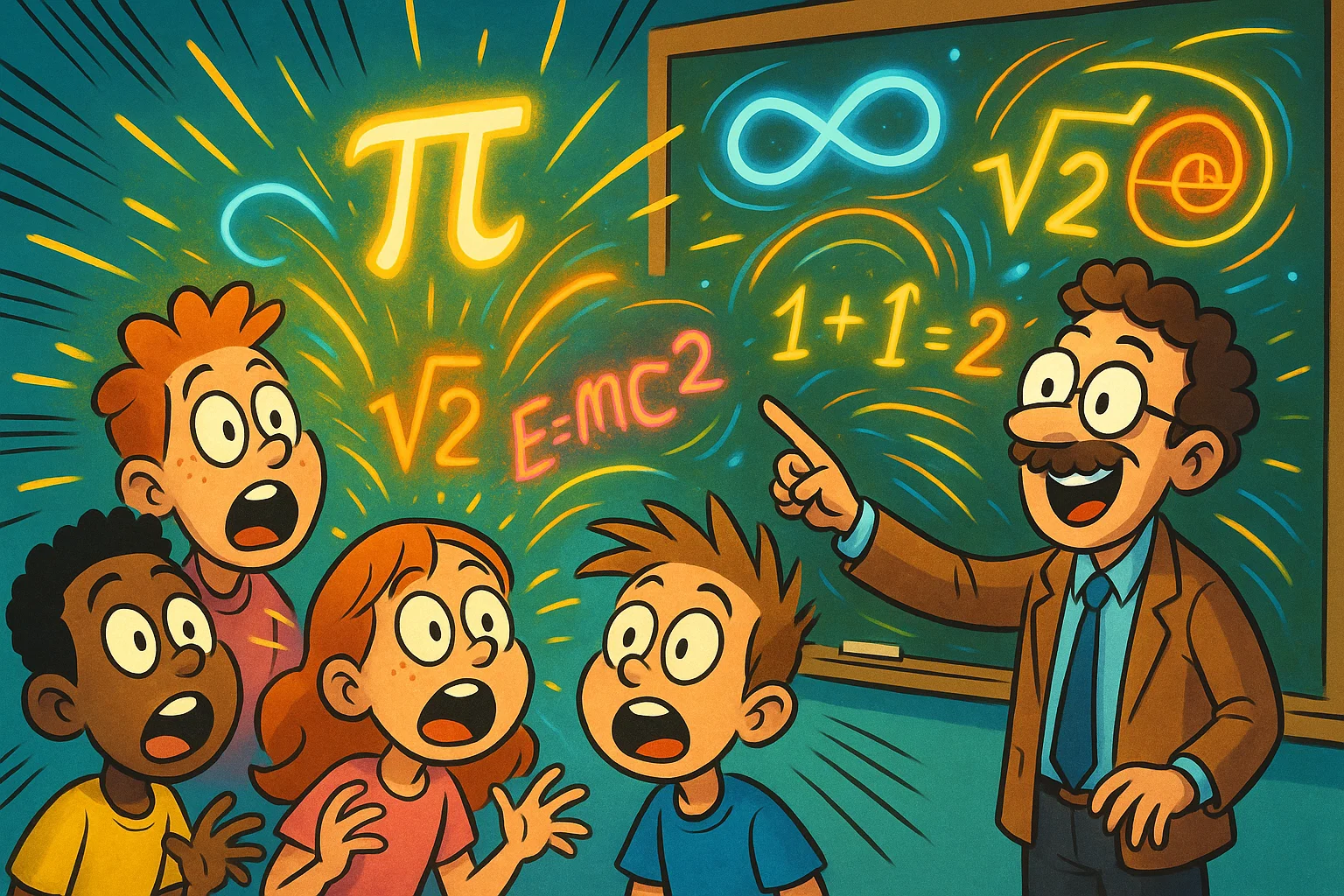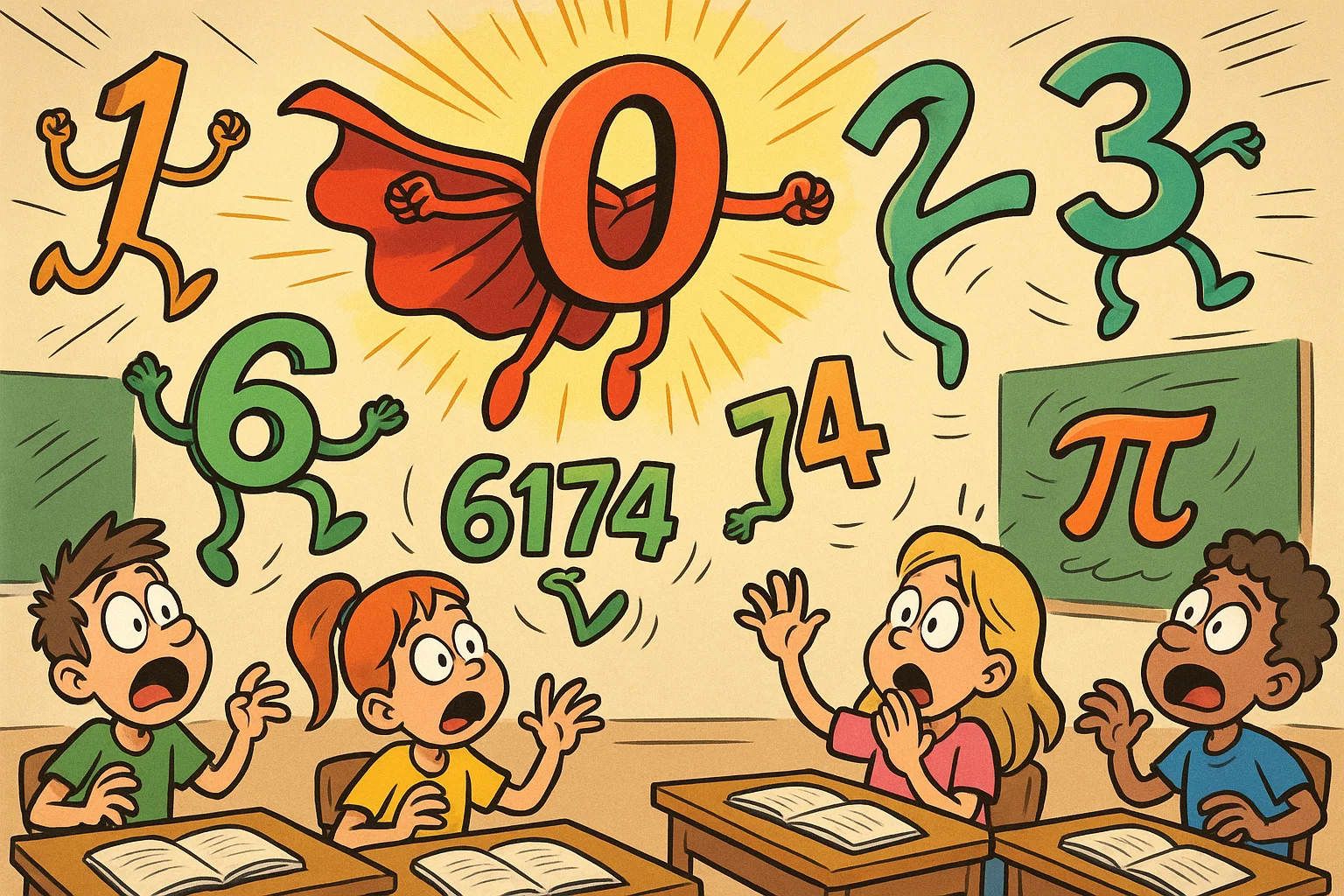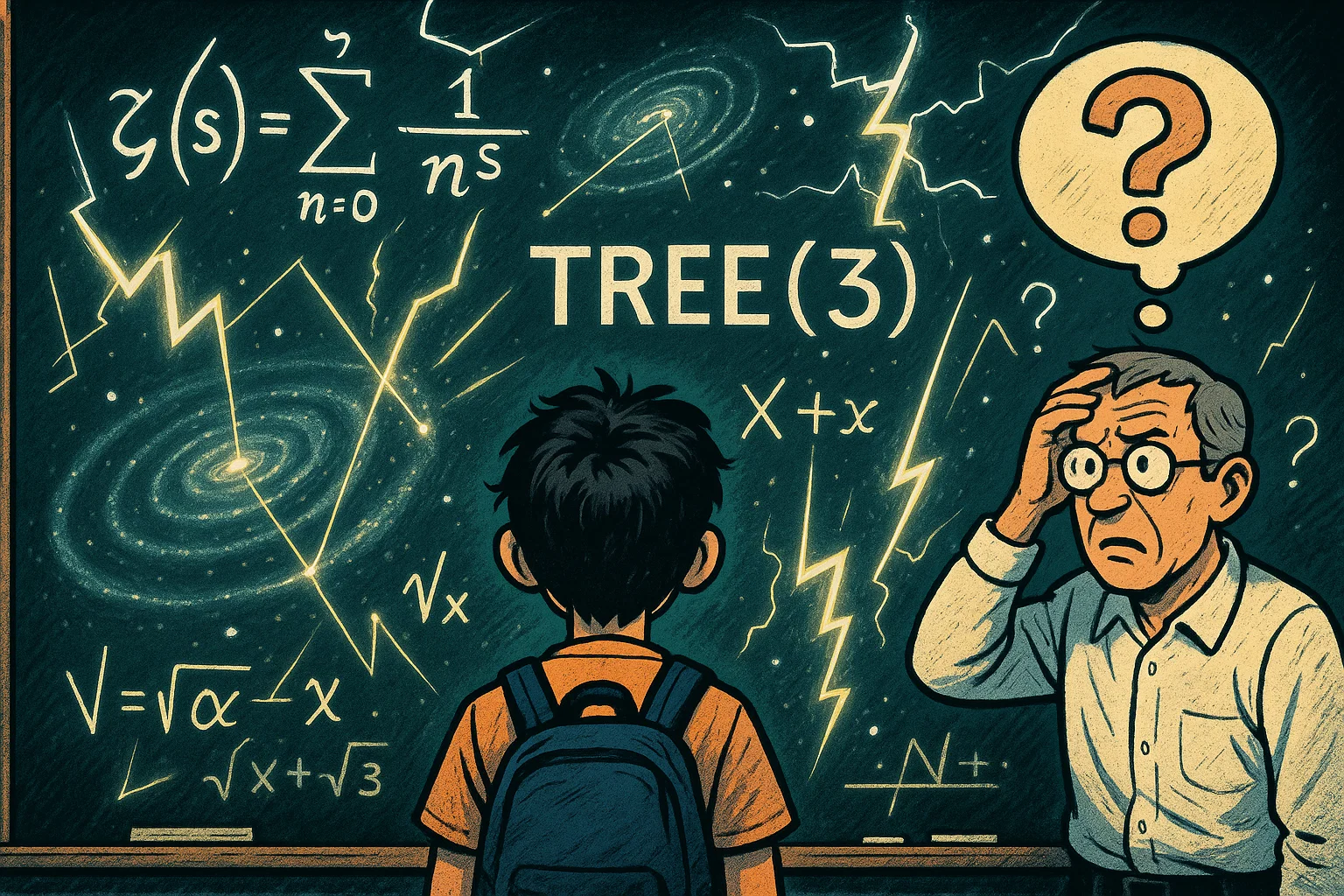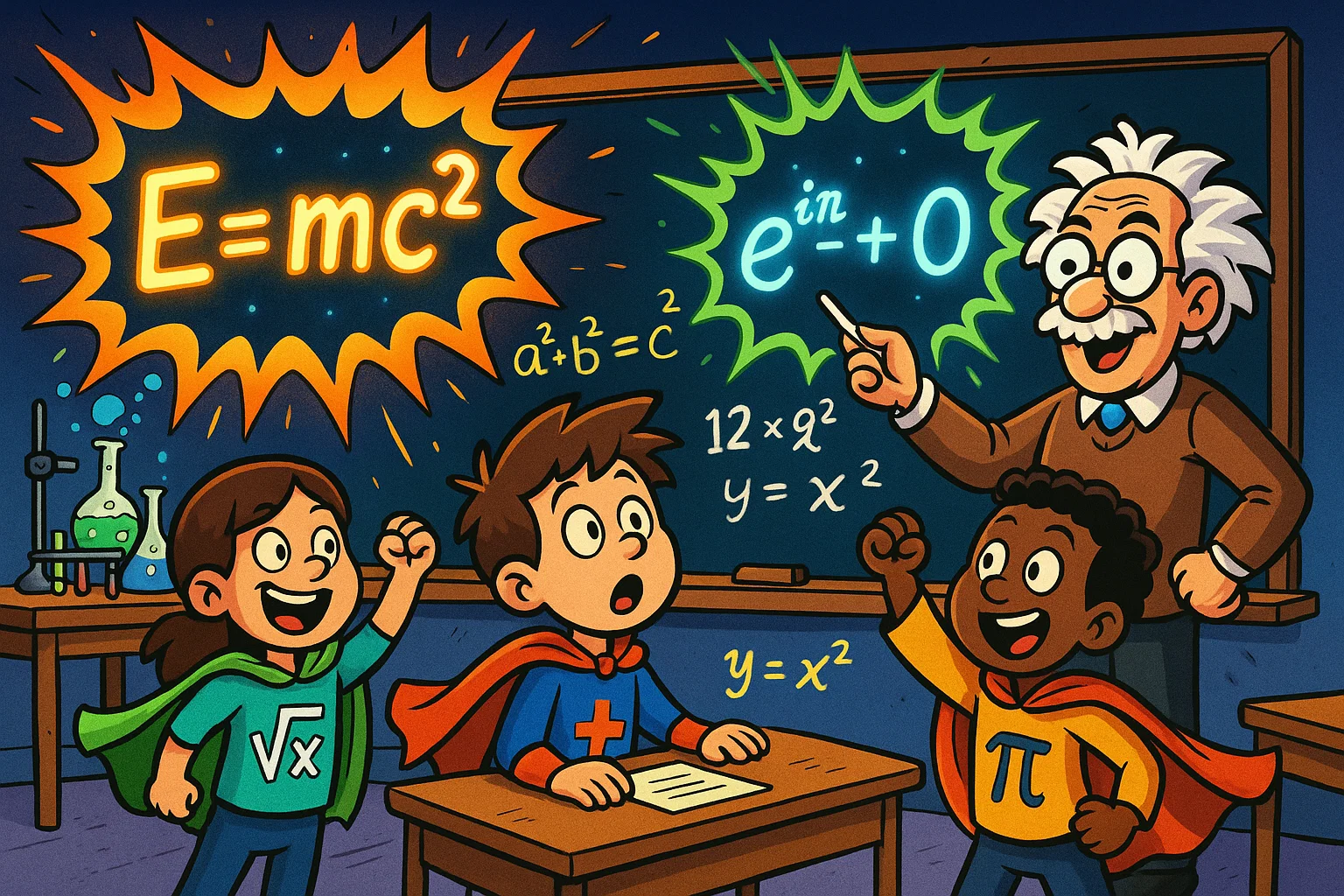Mind Blowing Mathematics Facts That Will Change How Your Kid Sees Math

Have you ever paused to truly look at the world around you — not just with a quick glance, but with genuine curiosity? When you do, you’ll find that the universe isn’t ruled by chaos, but by an elegant, unshakable order: mathematics. From the spiral of a sunflower to the algorithms behind your smartphone, math is the hidden language of existence. It’s not merely a school subject — it’s the invisible architecture of reality, shaping snowflakes, galaxies, and everything in between.
Experts note that when math is presented not as a chore but as a source of wonder, it can ignite lifelong curiosity in both children and adults alike. Forget dull equations — these surprising math facts will transform how you see numbers, logic, and the world around you.
Incredible Number Facts That Defy Logic

The bedrock of all mathematical thought lies in the nature of numbers themselves. They are far from simple; some of the most basic concepts in arithmetic hold astonishing, even counterintuitive properties. These facts about maths show that even the simplest digit can hold cosmic power.
Zero — The Most Powerful Nothing
It might seem obvious, but the concept of zero is one of humanity’s greatest inventions. Before zero was widely accepted, early number systems struggled with place value. Imagine trying to distinguish 47 from 407 without a placeholder! The genius of the digit zero is that it simultaneously represents “nothing” (the absence of quantity) and acts as the crucial anchor for our decimal system. Zero is the only real number such that 0 is neither positive nor negative. (0 ∉ {x. It is the additive identity: a + 0 = a. And, of course, it’s also the operation that breaks mathematics! Division by zero is undefined, creating a fundamental limit in the world of mathematics.
Infinity — Bigger Than You Think
When we think of infinity, we usually imagine something endless. But the mathematician Georg Cantor showed us something truly mind-blowing: there are different sizes of infinity!
- Countable Infinity: This is the set of all natural numbers (1, 2, 3, and so on). You can theoretically count them, even though you would never finish. The set of even numbers (2, 4, 6, and so on) is the same size as the set of all natural numbers, despite being a subset!
- Uncountable Infinity: This is the set of all real numbers between 0 and 1, or all points on a line. Cantor proved that this set is larger than the set of natural numbers. You cannot list or count them; there are infinitely more decimals between 0 and 1 than there are whole numbers in the entire set of integers! This concept, known as Cantor’s theorem, is a core discovery in advanced mathematics.
Prime Numbers — Hidden Patterns in Randomness
A prime number is a natural number greater than 1 that has no positive divisors other than 1 and itself (e.g., 2, 3, 5, 7, 11). Prime numbers are the building blocks of all other integers (every whole number is either prime or can be created by multiplying primes together). Yet, despite their foundational role, their appearance is frustratingly random. Mathematicians have been looking for a definitive, predictable formula to generate all prime numbers for centuries, with no success. This apparent randomness forms the foundation of modern cryptography and internet security. The fact that the largest known prime number has millions of digits shows just how deeply we explore the numerical universe. The mystery of prime numbers continues to fascinate mathematicians and learners alike.
Kaprekar’s Constant (6174)
Take any four-digit number (except one with all the same digits, like 1111). Rearrange the digits to form the largest possible number and the smallest possible number. Subtract the smaller from the larger. Repeat the process. Within at most seven steps, you will always arrive at the number 6174. This number, dubbed Kaprekar’s Constant after the Indian mathematician D. R. Kaprekar, is a mesmerizing example of mathematical trickery.
Example, starting with 9853:
- 9853 − 3589 = 6264 → 6642 − 2466 = 4176 → 7641 − 1467 = 6174
It is an entirely self-contained numerical loop (a numerical black hole that pulls in every other four-digit starting point).
Patterns in Nature That Reveal Mathematical Beauty
The universe is an artist, and mathematics is its brush. When you look closely at natural phenomena, you find astonishing, repetitive patterns that can all be described by equations and numerical relationships.
Fibonacci Sequence in Nature
The Fibonacci Sequence is a series of numbers where each number is the sum of the two preceding ones, starting with 0 and 1: 0, 1, 1, 2, 3, 5, 8, 13, 21, 34, and so on. What is mind-blowing is that this simple sequence of numbers is a universal blueprint for growth and efficiency in the natural world. This sequence is an example of a recursive relationship and is intimately tied to the next mathematical constant.
The table below shows how the Fibonacci sequence appears in nature:
| Natural Example | Fibonacci Sequence Number |
| Petals on a Lily | 3 |
| Petals on a Buttercup | 5 |
| Segments of a Pineapple | 8, 13, or 21 |
| Spirals on a Pinecone | 5 and 8 |
| Branches of a Tree | Reflect the sum of the two preceding branches |
Golden Ratio in Art and Nature
The Golden Ratio, often represented by the Greek letter Phi, is an irrational mathematical constant, approximately equal to 1.618. It is defined as the perfect ratio where (a + b)/a = a/b = φ. The Golden Ratio is woven into nature and human creation.
- In Biology, the ratio of the length of the longer part of your finger to the shorter part often approximates Phi.
- In Art, many famous artists, including Leonardo da Vinci, consciously or subconsciously used the ratio to create pleasing, balanced compositions.
- In Architecture, the Parthenon in Greece and the Great Pyramid of Giza are believed to incorporate the ratio in their design.
- In Galaxies, the spiral shape of a galaxy is often described by a logarithmic spiral, which expands in proportion to the Golden Ratio.
The closer you look, the more you see this aesthetically perfect ratio.
Fractals and Self-Similarity
A fractal is a never-ending pattern that is infinitely complex. They are patterns in nature that reveal mathematical beauty. What is fascinating is that they are self-similar (you can zoom in on any part of the fractal, and it will look exactly like the whole).
- Coastlines, snowflakes, clouds, tree branches, and Romanesco broccoli are all examples of natural phenomena that exhibit fractal properties.
- Mathematicians use math to model these structures, with the Mandelbrot set being one of the most famous examples of a complex, visually stunning fractal that is generated by a simple iterative equation.
Mind Bending Geometry Facts

Geometry is the mathematical study of space, dimensions, shape, size, and position of figures. But it is not all triangles and squares; some of its concepts completely upend our intuitive understanding of the two-dimensional and three-dimensional real world.
Mobius Strip The One Sided Surface
Take a strip of paper, give it a half-twist, and glue the ends together. You have created a Mobius Strip. If you try to draw a line down the middle of the strip, you will find that the line covers the entire surface and meets itself at the starting point without ever crossing an edge! This simple action creates a non-orientable surface with a single edge and a single side. The Mobius Strip is not just a party trick; It’s used in practical ways, such as in conveyor belts (which wear more evenly) and magnetic tapes!
Tessellations Perfect Patterns Without Gaps
A tessellation is a pattern of shapes that perfectly covers a surface without any overlaps or gaps. Think of a honeycomb, a brick wall, or a mosaic.
- A Regular Tessellation uses only one type of regular polygon (e.g., squares, triangles, or hexagons).
- A Semi-Regular Tessellation uses two or more different regular polygons.
The Dutch artist M.C. Escher was a master of using tessellations to create impossible, repeating worlds in his art. The math governing tessellations is crucial for modern architecture, design, and even in mapping the structure of crystalline solids.
Four Color Theorem
Imagine you have to color a map so that no two adjacent countries share the same color. The Four Color Theorem states that for any two-dimensional map, you never need more than four colors. The truly mind-blowing part of this theorem is that it was the first major mathematical theorem to be proved almost entirely by a computer in 1976. The proof involved checking thousands of specific cases (a task impossible for humans) showing the increasing reliance of mathematicians on computational power to prove complex math facts.
The Shape That Never Repeats Aperiodic Tiling
A standard tile pattern repeats indefinitely. However, in the 1970s, mathematician Roger Penrose discovered a set of two shapes (often called Penrose Tiles) that can tile an infinite plane, but the pattern will never repeat exactly. These are known as aperiodic tilings. These fascinating tiles provide a mathematical explanation for the structure of quasicrystals, materials that have a highly ordered structure but lack the repeating symmetry of traditional crystals. The fact that a non-repeating pattern can still be ordered and finite is one of the coolest discoveries in modern geometry.
Math in Everyday Life That Feels Like Magic
We use math daily, often without realizing it. These examples show how the mathematical tricks of probability and arithmetic govern our choices, finances, and even our social interactions.
The Birthday Paradox
This is a classic fun math facts problem that seems utterly counterintuitive. In a room of just 23 people, there is a greater than 50 percent chance that two of them will share the same birthday. If you get to 70 people, the probability jumps to over 99.9 percent!
Why?
- The key is that the probability is not about your birthday matching someone else’s, but about any two people in the room matching.
- Each new person adds a huge number of potential pairings to check, leading to a surprisingly fast increase in probability.
This paradox is often used to demonstrate the power of combinatorics and exponential growth.
Pizza Geometry
Here is a practical math facts tip: when ordering pizza, always go for one large one instead of two mediums. A standard 18-inch diameter pizza is almost always a better deal than two 12-inch pizzas. The area of a circle is calculated using the formula: Formula for a circle’s area: A = πr².
- Two 12-inch pizzas: 2 × (π × 6²) = 72π sq. in.
- One 18-inch pizza: 1 × (π × 9²) = 81π sq. in.
The large pizza has 9 times Pi (about 28) more square inches of pizza than the two medium ones combined, and usually costs less! That’s a simple example of how math helps you make better everyday decisions
Compound Interest — The Eighth Wonder
Albert Einstein is famously quoted as calling compound interest the “eighth wonder of the world.” The formula for compound interest is an exponential one, meaning the growth accelerates over time. You earn interest not only on your initial principal but also on the interest you have already accumulated. This mathematics of exponential growth is why starting to save early, even with small amounts, yields massive returns over decades. It’s one of the most powerful financial principles available to everyone.
Unsolved Mysteries and Theories That Still Amaze

Even in the most logical of disciplines, great mysteries persist. The edge of mathematics is a place of profound speculation, where brilliant minds are still striving to prove theories that could redefine our understanding of real numbers and logic.
Riemann Hypothesis
One of the most important unsolved problems in all of mathematics, the Riemann Hypothesis, is all about the distribution of prime numbers. It essentially proposes that the non-trivial zeros of the Riemann zeta function all lie on a specific line in the complex plane (where imaginary units are plotted). If proven true, this theorem would unlock the deepest secrets of prime numbers and allow mathematicians to better understand and predict their seemingly random arrangement. It is one of the seven Millennium Prize Problems, and a correct proof comes with a one million dollar prize.
TREE(3): The Unimaginably Large Number
Mathematicians love to deal with huge numbers, but the number known as TREE(3) breaks the imagination. It is an example of a “fast-growing function,” where the size of the number grows so quickly that it is unrepresentable by standard notation.
- It is vastly, vastly larger than Graham’s Number, which was once the largest number ever used in a mathematical proof.
- It cannot be expressed even in the most complex forms of exponential notation.
The actual value of TREE(3) is a mind-bending example of mathematical enormity that proves the existence of a number so big that its digits would fill the known universe thousands of times over, yet it still has meaning in the finite world of logic.
Historical Math Facts That Shaped Civilization
The history of mathematics is the history of human progress. These anecdotes prove that every civilization has relied on mathematical insights to move forward.
Archimedes and Pi
The mathematical constant Pi, defined as the ratio of a circle’s circumference to its diameter, is a cornerstone of geometry. The mathematician Archimedes of Syracuse (c. 287-212 BC) was the first to calculate Pi with high precision. He did not calculate it directly, but instead used an ingenious method of “exhaustion” (approximating the circle’s area by using regular polygons inscribed within and circumscribed around the circle). He showed that π: 223/71 < π < 22/7. Centuries later, the German mathematician Ludolph van Ceulen spent a great part of his life calculating the first 35 digits of number pi. Today, we celebrate Pi Day on March 14th (3.14) to honor this infinite decimal and crucial mathematical constant.
Al-Khwarizmi and Algebra
The word “algebra” itself comes from the title of a book written by the Persian mathematician Muhammad ibn Musa al Khwarizmi in the 9th century: Al Kitab al mukhtasar fi hisab al jabr wal muqabalah (The Compendious Book on Calculation by Completion and Balancing). Al Khwarizmi not only systematized the process of solving linear and quadratic equations (the foundation of algebra) but also is credited with introducing the Hindu-Arabic number system (including zero) to the Western world. His name is the root of the word “algorithm,” which forms the mathematical basis for every computer program, search engine, and app we use today.
Mathematical Curiosities and Fun Challenges

Mathematics is often a playground for the mind. These fun math facts and mathematical tricks are designed to spark your curiosity and show that the subject can be playful, counterintuitive, and truly engaging.
Monty Hall Problem
Based on a popular TV game show, the Monty Hall Problem presents a paradox in probability. You are asked to choose one of three doors. Behind one door is a car (the prize), and behind the other two are goats. After you pick a door, the host (who knows where the car is) opens one of the other doors to reveal a goat. He then asks if you want to switch your choice to the remaining unopened door. The counterintuitive answer is yes, you should switch!
- Your initial chance of picking the correct door was 1 out of 3.
- The host’s action does not change that initial probability, but it concentrates the remaining 2 out of 3 probability onto the single remaining unopened door.
Switching your choice doubles your chances of winning the car from 1/3 to 2/3. This is one of the most famous examples of how human intuition often fails to grasp basic mathematical probability.
Real World Applications That Prove Math is Everywhere
If you ever asked a teacher, “When will I ever use math?”, these modern applications provide the definitive answer.
Math in AI and Algorithms
Every aspect of modern life from the recommendations on Netflix to the efficiency of logistics networks is driven by mathematical algorithms.
- Machine Learning relies on calculus (optimization), algebra (data transformation), and statistics (probability and inference) to learn from data and make predictions.
- Cryptography uses advanced number theory (like the properties of prime numbers) to secure communications and financial transactions.
The modern digital world is essentially a vast mathematical construct.
Data Patterns and Benford’s Law
Benford’s Law is an astonishing mathematical theorem about the first digit in lists of real-world natural numbers. It states that in many naturally occurring datasets (like stock prices, house numbers, or Fibonacci sequence numbers), the digit 1 will appear as the first digit about 30 percent of the time, while the digit 9 will appear less than 5 percent of the time. This amazing math facts principle is now used by forensic accountants to detect fraud and corruption. If a financial report shows an unnaturally high frequency of digits 8 or 9 as the first digit, it suggests that the data may have been manipulated! Use math to fight crime!
Famous Equations That Changed the World

These simple arrangements of symbols hold massive, world-altering power. They are the shorthand for the deepest truths of the cosmos.
Euler’s Identity: The Most Beautiful Equation
Called by many the most beautiful equation in mathematics, Euler’s Identity is stated as: The exponential constant E, raised to the power of the imaginary unit I times Pi, plus 1, equals 0. This formula connects five of the most fundamental mathematical constants and digits:
- 0 and 1 (the building blocks of arithmetic)
- Pi (the fundamental constant of geometry, approximately 3.14159)
- E (the base of natural logarithms, an essential exponential constant, approximately 2.71828)
- I (the imaginary unit, which is the square root of -1)
This compact equation links the concepts of arithmetic, algebra, geometry, and complex numbers in a single, elegant line.
Einstein’s E = mc²
While simple in appearance, this equation of special relativity changed physics forever. It states that energy (E) and mass (m) are interchangeable and equal to the mass multiplied by the speed of light squared (c squared). This single formula explained how a tiny bit of mass could be converted into a tremendous amount of energy, fundamentally unlocking the secrets of the atom and the power of the sun.
Pythagorean Theorem: The Foundation of Geometry
This is the cornerstone of geometry. The Pythagorean Theorem states that in a right-angled triangle, the square of the length of the hypotenuse (the side opposite the right angle, c) is equal to the sum of the squares of the lengths of the other two sides (a and b). The formula is written as “
| a² + b² = c² |
.” This simple formula is one of the oldest and most proven mathematical theorems, forming the basis for construction, navigation, and virtually all two-dimensional geometry.
Logarithms and Exponentials
Logarithms and exponential functions are inverses of each other, and together they are the mathematics of change. They describe growth and decay across all real-world phenomena:
- Growth (Population growth, compound interest, and viral spread are all modeled using exponential functions).
- Decay (Radioactive decay and the cooling of objects follow exponential decay).
- Logarithms (They allow us to compress vast ranges of magnitude. Examples include the Richter scale for earthquakes, the Decibel scale for sound intensity, and the pH scale for acidity, where each step represents a tenfold change).
Cultural and Inspirational Math Moments
Mathematics is not just dry logic; it is deeply interwoven with art, creativity, and human narrative.
Math in Music and Art
From the ancient Greeks, through the Renaissance, and into modern design, artists have utilized mathematical principles to create beauty.
- In music, pitch, harmony, and rhythm can all be expressed as fractional ratios and proportions. Pythagoras was the first to discover the mathematical basis of musical harmony by correlating musical intervals with the ratios of string lengths (e.g., an octave is a 2 to 1 ratio).
- In Art, the use of perspective in painting (starting in the Renaissance) is entirely based on geometry and projective space.
Famous Math Quotes
The intellectual beauty of mathematics is best captured by those who devoted their lives to it:
- “The laws of nature are but the mathematical thoughts of God.” by Johannes Kepler.
- “Do not worry about your difficulties in mathematics; I can assure you that mine are still greater.” by Albert Einstein.
- “Mathematics is the queen of the sciences and arithmetic the queen of mathematics.” by Carl Friedrich Gauss.
Math in Cinema and Pop Culture
The world of mathematics provides fantastic plot devices for movies and television:
- “Interstellar” features a literal visualization of geometry and higher dimensions (tesseracts) to explain wormholes and time travel.
- “Good Will Hunting” showcases the genius of a young man solving an advanced graph theory equation on a chalkboard, highlighting the beauty and intellectual challenge of mathematics.
Summary and Key Takeaways on Mind Blowing Math Facts
We have journeyed through an array of mind-blowing math facts, from the ubiquitous spirals of the Fibonacci sequence to the profound philosophical paradoxes of infinity and the Riemann Hypothesis. You have seen how an even numbers divisor rule is fundamental, how the number pi governs circles, and how the simple act of calculation can uncover world-changing truths. Mathematics is not merely a set of rigid rules or rote math facts; it is the most powerful lens we have to view the universe. Every discovery, from the simplest arithmetic to the most complex calculus, reinforces a single truth: the universe itself is mathematical. The ability to reason logically, solve equations, and understand mathematical patterns is the key to thriving in our increasingly data-driven world. By understanding these fun math facts, you are not just memorizing trivia—you are learning a new way to see the real world. Keep asking ‘why,’ keep exploring those strange and beautiful numerical patterns, and keep an open mind. The most incredible mathematical theorem is likely yet to be discovered.
